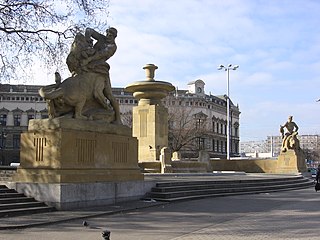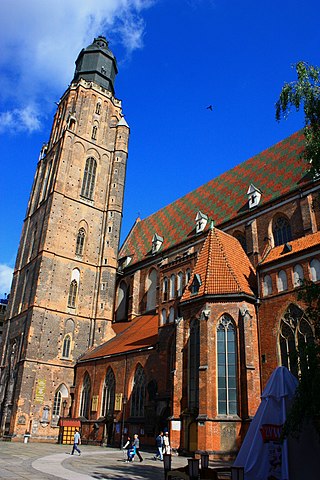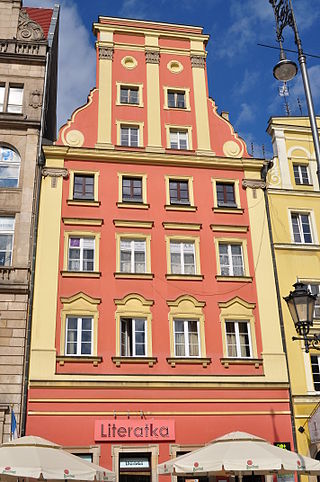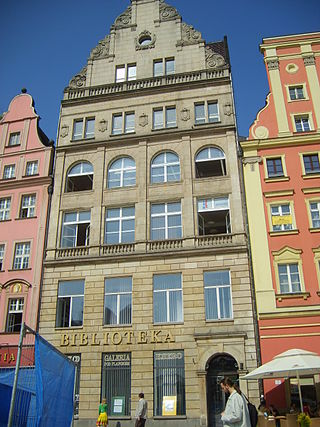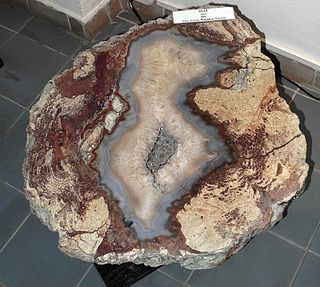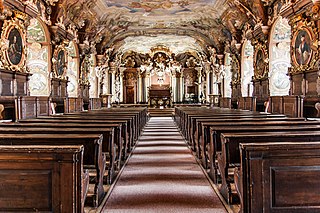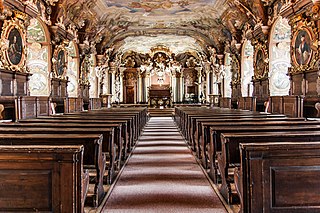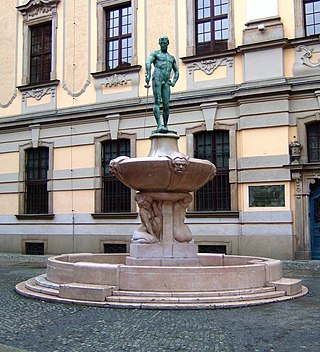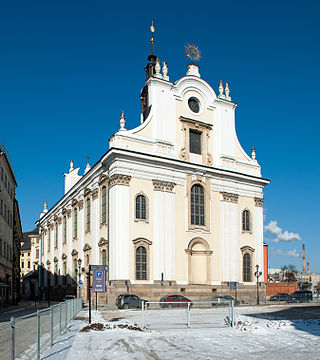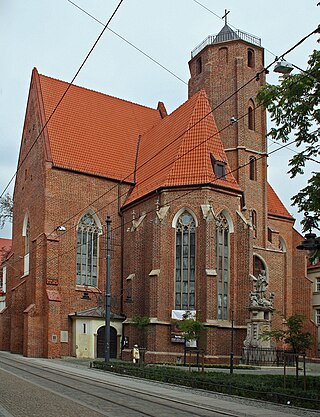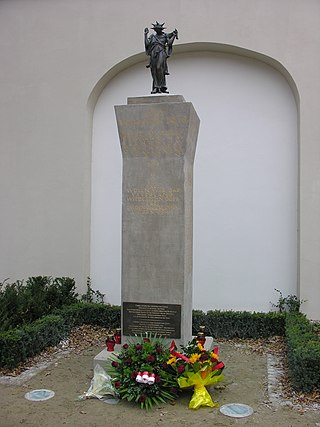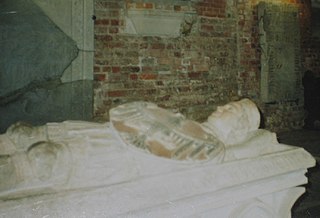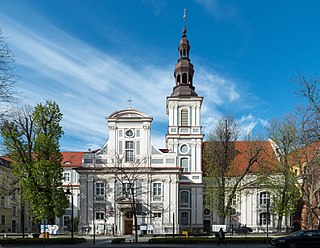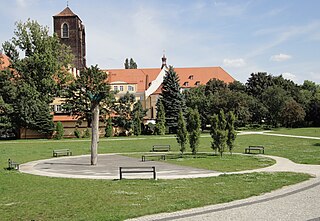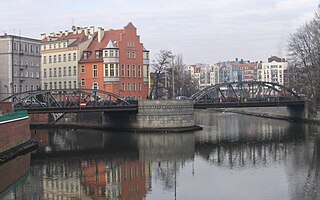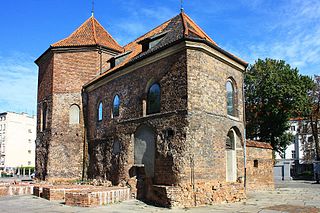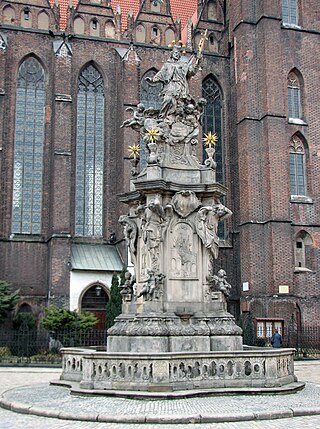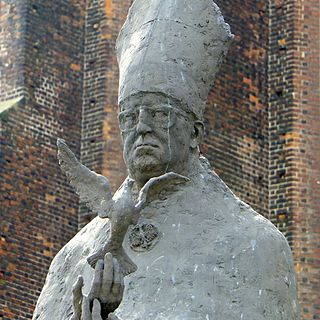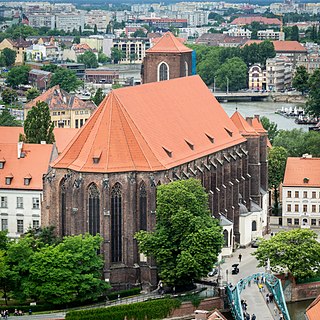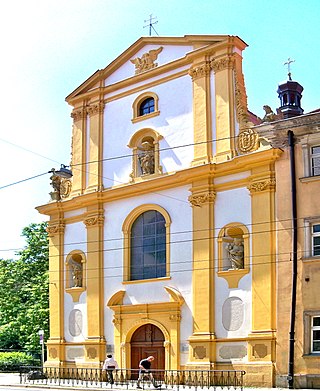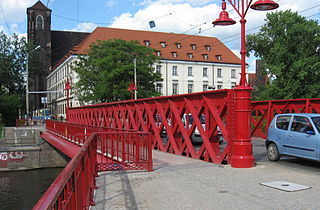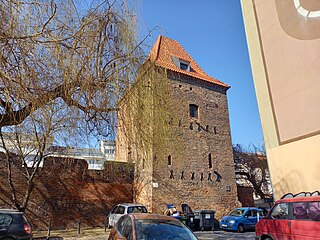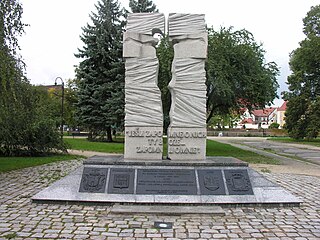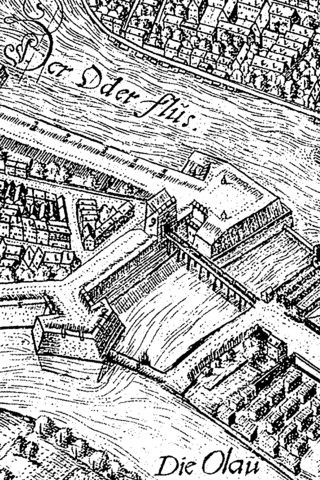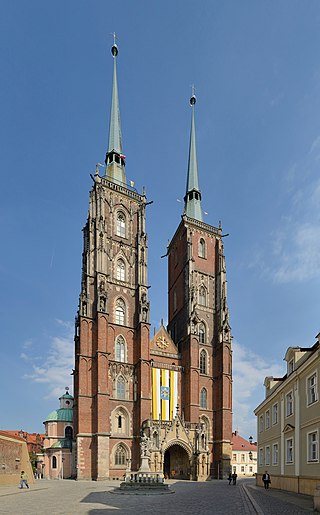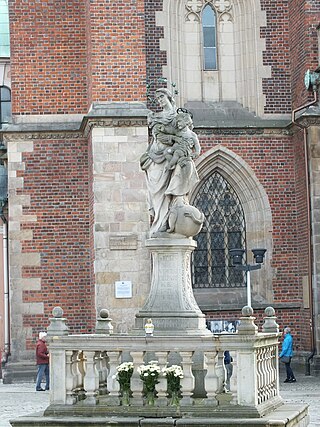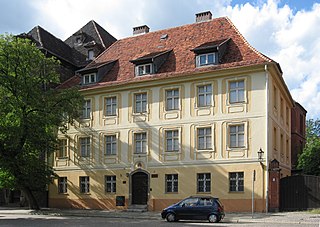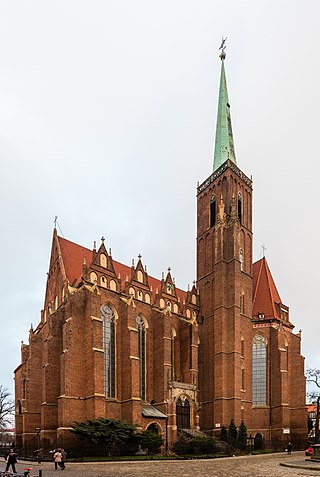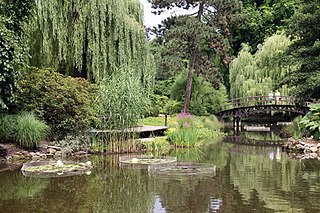Self-guided Sightseeing Tour #2 in Wrocław, Poland
Legend
Tour Facts
7.3 km
99 m
Experience Wrocław in Poland in a whole new way with our free self-guided sightseeing tour. This site not only offers you practical information and insider tips, but also a rich variety of activities and sights you shouldn't miss. Whether you love art and culture, want to explore historical sites or simply want to experience the vibrant atmosphere of a lively city - you'll find everything you need for your personal adventure here.
Individual Sights in WrocławSight 1: Fontanna Alegoria Walki i Zwycięstwa
The Allegory of Struggle and Victory Fountain – a fountain and sculptures (monuments) of Struggle and Victory located in Wrocław at John Paul II Square in the Old Town Promenade running along the city moat.
Sight 2: Polish Orthodox Church
The Cathedral of the Nativity of the Most Holy Mother of God is an Orthodox cathedral in Wrocław, which is the main temple of the Diocese of Wrocław-Szczecin and the seat of the parish of the Nativity of the Most Holy Mother of God. The Cathedral is located at St. Nicholas Street, within the District of Four Denominations.
Wikipedia: Sobór Narodzenia Przenajświętszej Bogurodzicy we Wrocławiu (PL)
Sight 3: St. Elizabeth's Church
St. Elizabeth's Church of the Catholic Third Order of Saint Francis is a Gothic church in Wrocław, Poland. It is one of the most iconic structures of the city's Old Town panorama.
Sight 4: Dom altarystów Małgosia,
Hansel and Gretel – two historic medieval tenement houses at the north-west corner of the Wrocław Market Square, connected with each other by an arcade. Built most probably in the fifteenth century, they were then part of a larger group of altarist houses of the parish church of St. Elizabeth. Between the tenement houses, under the arcade, there was an entrance to the cemetery liquidated in the eighteenth century, which is reminded by the inscription in Latin. on the cartouche "Mors Ianua Vitae" –. There used to be a gate in this gate.
Sight 5: Kamienica Pod Złotym Pokojem
The Golden Room Tenement House – a tenement house on the Market Square in Wrocław, on the northern frontage of the market square, known as the Sweets Market.
Sight 6: Kamienica Pod Złotą Palmą
The House Under the Golden Palm, Lower Silesian Public Library – a tenement house on the Market Square in Wrocław, on the northern frontage of the market square, known as the Sweets Market.
Sight 7: Muzeum Mineralogiczne
The Kazimierz Maślankiewicz Mineralogical Museum in Wrocław is a unit of the Institute of Geological Sciences of the University of Wrocław, at 30 Cybulskiego Street, with a branch at 22 Kuźnicza Street.
Wikipedia: Muzeum Mineralogiczne im. Kazimierza Maślankiewicza we Wrocławiu (PL), Website
Sight 8: University of Wrocław Museum
The Museum of the University of Wrocław is a museum in Wrocław (Poland) displaying many of the historical objects of the University of Wrocław.
Wikipedia: Museum of the University of Wrocław (EN), Website
Sight 9: Aula Leopoldina
Aula Leopoldina, Aula Leopoldińska – a representative, baroque hall in the main building of the University of Wrocław.
Sight 10: Powodzianka
Flood Victim – a monument by the Wrocław sculptor Stanisław Wysocki commemorates the efforts of Wrocław residents in the fight against the flood of the millennium in July 1997. It depicts a woman carrying books. It was unveiled on the first anniversary of the flood.
Sight 11: Fencer
The Fencer Fountain is a fountain in Wrocław located on the square in front of the University of Wrocław and one of its symbols. It was designed by Hugo Lederer (1871–1940), a professor at the Berlin Academy of Fine Arts, and was placed on University Square on 26 November 1904.
Sight 12: Kościół Imienia Jezus
The Church of the Name of Jesus in Wrocław, currently the university church at 1 University Square, is a Baroque church erected by the Jesuits in the years 1689–1698.
Sight 13: Kościół pw. Świętego Macieja
Church of St. Matthias the Apostle in Wrocław – a Gothic brick church, built on a cruciform plan, single-nave with a transept and a tower. It is located on the eastern side of Szewska Street, with the address of 17a Bishop Nankiera Square. The history of the church dates back to the first quarter of the thirteenth century. It was then built as a court chapel associated with the court (curia) of Henry the Bearded, which was located further east. This church consisted of a two-bay nave and also a two-bay, narrower and longer chancel.
Sight 14: Pomnik ofiar I wojny światowej
Monument to the victims of World War I in Wrocław, also: Monument to the fallen students and teachers of St. Matthias Gymnasium – a reconstructed monument, located in the courtyard of the Ossolineum in Wrocław.
Sight 15: Angelus
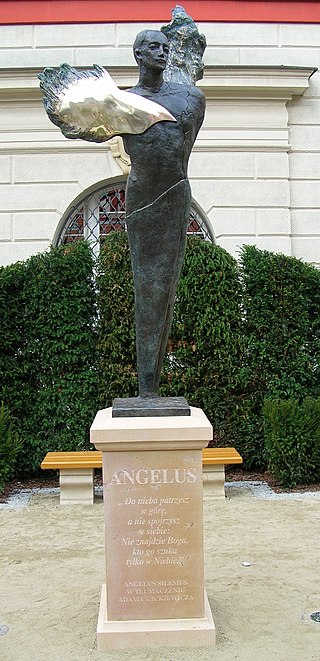
The Monument of the Angel of Silesia or the Monument of Angelus Silesius is a monument erected in Wrocław in the courtyard of the Ossolineum.
Sight 16: Mauzoleum Piastów Śląskich
The Mausoleum of the Silesian Piasts in Wrocław is located in the church of St. Clare and St. Hedwig at Nankiera Square, in the Catholic school of the Ursuline Sisters of the Roman Union, in the former main nave of the church.
Wikipedia: Mauzoleum Piastów Śląskich we Wrocławiu (PL), Url
Sight 17: Kościół pw. Świętej Klary i Świętej Jadwigi
Church of St. Hedwig in Wrocław – a Roman Catholic temple, which, together with the former convent of the nunnery of St. Clare, today belongs to the Ursuline Sisters of the Roman Union, running a Public High School here.
Wikipedia: Kościół św. Klary i św. Jadwigi we Wrocławiu (PL)
Sight 18: Domek Romański
Romanesque House in Wrocław, or House of the Ladies of Trzebnica in Wrocław, is a Romanesque villa at Plac Biskupa Nankiera in Wrocław. More precisely, it is an early-Gothic building with Romanesque elements that dates back to the beginning of the 13th century, partly reconstructed after World War II. It was the centre for the Cistercians of Trzebnica, which is why it was called the House of the Ladies of Trzebnica. Nearby, along the Kotlarska Street, were the Nowe Jatki, a medieval shopping center belonging to the monastery.
Sight 19: Kościół pw. Świętego Wincentego i Świętego Jakuba
The Cathedral of St. Vincent and St. James is a Gothic cathedral located in the Old Town of Wrocław, Poland, seat of the Ukrainian Catholic Eparchy of Wrocław. It is one the burial sites of Polish monarchs.
Wikipedia: St. Vincent and St. James Cathedral, Wrocław (EN), Website
Sight 20: Żywy pomnik Arena
A lively monument Arena - an outdoor sculpture by Jerzy Beresia located on the island of Piasek in Wrocław. The sculpture was one of the projects intended for urban space prepared on the occasion of the Wrocław '70 art symposium. Another sculpture, realized in Wrocław according to projects from the symposium, is a chair made according to the design of Tadeusz Kantor.
Sight 21: Most Młyński Południowy
The Mill Bridges in Wrocław – a complex of two bridges over the branches of the Northern Oder. Bridges connect Sand Island with Mill Island and Mill Island with the right bank of the river. Before 1945, they were collectively called Gneisenau Brücke.
Sight 22: Kościół Świętego Marcina
St. Martin's Church in Wrocław – a small Gothic church located in the western part of Ostrów Tumski in Wrocław. It is one of the oldest existing church buildings in Wrocław.
Sight 23: Święty Jan Nepomucen
Monument of St. John of Nepomuk – an eighteenth-century sculpture (nepomuk) by Jan Jerzy Urbański depicting John of Nepomuk, located on Ostrów Tumski in Wrocław.
Wikipedia: Pomnik św. Jana Nepomucena na Ostrowie Tumskim (PL), Url
Sight 24: Kościół Świętych Piotra i Pawła
Church of St. Peter and St. Paul – a church in the south-western part of Ostrów Tumski in Wrocław, next to the Tumski Bridge. The 14-metre-wide building is orientated, set sideways (24 m long) to Katedralna Street, and the wall of its presbytery is partly adjacent to the orphanage (Orphanotrophaeum) for noble children, erected later (1702–15), later transformed into a dormitory (currently it houses, among m.in, the Specialist Family Counselling Centre and the Adoption and Care Centre of the Metropolitan Curia, the Metropolitan Organist Study and the Wrocław station of Radio Rodzina; there was also a Academic Pastoral Ministry "under the Four".
Wikipedia: Kościół św. Piotra i św. Pawła we Wrocławiu (PL), Url, Url 0
Sight 25: Most Tumski
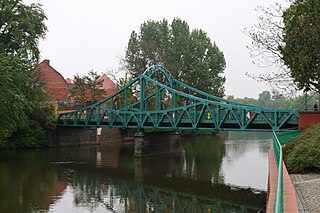
The Tumski Bridge, lit. 'Cathedral Bridge', is a steel bridge over the northern branch of the Oder in Wrocław. Constructed in 1889, it replaced an old wooden bridge to connect the Cathedral Island with the Sand Island. The bridge is open to pedestrians only.
Sight 26: Pomnik Kardynała Bolesława Kominka
Monument to Cardinal Bolesław Kominek - a monument on the island of Piasek, at ul. Of the Blessed Virgin Mary, at the entrance to Ostrów Tumski in Wrocław.
Wikipedia: Pomnik Bolesława Kominka we Wrocławiu (PL), Url 0
Sight 27: Kościół Najświętszej Marii Panny na Piasku
The Church of St. Mary on the Sand is a Catholic church in Wrocław, in Silesia, located on the Sand Island, in the Oder River, in the heart of the city. Founded in the 12th century, it is one of the oldest Gothic churches in the country.
Sight 28: Orthodox Church of Saints Cyril and Methodius
The Church of Sts. Cyril and Methodius is an orthodox church in Wrocław, Poland. It is located on the Sand Island.
Wikipedia: Sts. Cyril and Methodius Church (Wrocław) (EN), Website, Url, Url 0
Sight 29: Sand Bridge
The Sand Bridge – an iron bridge erected in 1861 in Wrocław, over the southern branch of the Oder River, entered into the register of immovable monuments of the Lower Silesian Voivodeship. It is the initial part of the route leading from the medieval city to the north. It is part of the oldest Wrocław crossing over the Oder, the northern section of which is made up of the Mill Bridges. The bridge is relatively narrow, on the less than six-and-a-half-meter roadway there are two opposite lanes of vehicular traffic and a two-way tram line. The sidewalks are located on the outer side of the bridge girders.
Sight 30: Wrocław Market Hall
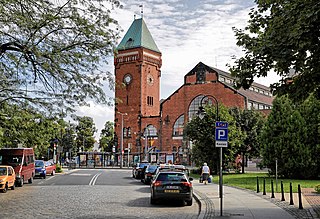
Wrocław Market Hall is a food hall in central Wrocław, Poland. Designed by Richard Plüddemann, it was built between 1906 and 1908 as the Breslauer Markthalle Nr 1, when the city was part of German Empire. The Hall was renowned for its then-innovative application of reinforced concrete trusses, which was unique in Europe at the time.
Sight 31: Baszta Niedźwiadka
The Bear Tower – a medieval tower in the system of city fortifications of Wrocław, located between today's streets: Piaskowa and Kraińskiego, at the back of the Market Hall at Nankiera Square.
Sight 32: Pomnik ofiar UPA
The Monument to the Murdered in the Eastern Borderlands – a monument erected in Wrocław at Andrzeja Frycza-Modrzewskiego Street. The monument has the form of two pylons, and in the clearance between them there is a stylized figure of the crucified Christ. At the bottom of the pylons there is an inscription: If I forget about them, Thou God... forget about me.
Sight 33: Bastion Ceglarski
The Brick Bastion – a fragment of the fortifications of Wrocław, built in 1585 in the north-eastern part of the belt of external walls surrounding the Wrocław New Town. Demolished along with the walls at the beginning of the nineteenth century.
Sight 34: Kolumna Chrystusa Króla Wszechświata
The Column of Christ the King of the Universe in Wrocław, also known as the Millennium Column, is a statue of Christ on the Cathedral Square in Wrocław, erected on the occasion of the 1000th anniversary of the bishopric of Wrocław.
Wikipedia: Kolumna Chrystusa Króla Wszechświata we Wrocławiu (PL), Inscription Url, Url
Sight 35: Archikatedra Świętego Jana Chrzciciela
The St. John the Baptist Archcathedral is the seat of the Archdiocese of Wrocław and a landmark of the city of Wrocław in Poland. The cathedral, located in the Cathedral Island, is a Gothic church with Neo-Gothic additions. The current standing cathedral is the fourth church to have been built on the site.
Sight 36: Madonna z Dzieciątkiem
The Statue of the Mother of God with the Child in Ostrów Tumski – a monument of Mary Immaculately Conceived erected in Wrocław on the Cathedral Square in front of the main entrance to the Archcathedral of St. John the Baptist.
Sight 37: Kościół Świętego Idziego
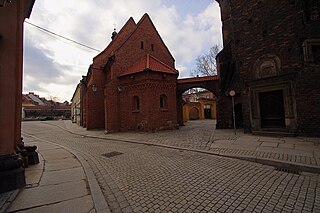
St. Giles' Church in Wrocław – a late-Romanesque church from the 1st half of the 13th century in Ostrów Tumski in Wrocław. It is the oldest fully preserved building in Wrocław, and at the same time the oldest church in the city that is still active today.
Sight 38: Archdiocesan Museum
The Archdiocesan Museum in Wrocław – a museum founded in 1898 in Wrocław, one of the oldest archdiocesan museums in Poland; collects, m.in, a rich and rare collection of ancient and Gothic monuments, mainly from the times of the Piasts of Silesia.
Wikipedia: Muzeum Archidiecezjalne we Wrocławiu (PL), Website
Sight 39: Kolegiata Świętego Krzyża i Świętego Bartłomieja
Collegiate Church of the Holy Cross and St. Bartholomew in Wrocław, Poland, is a two-storey brick Gothic collegiate church on the Ostrów Tumski, considered the second most important Roman Catholic church in Wrocław. It is one of the historic burial sites of Polish monarchs.
Wikipedia: Collegiate Church of the Holy Cross and St. Bartholomew, Wrocław (EN), Url, Url 0
Sight 40: Botanical Garden
The Botanical Garden of the University of Wrocław is a botanical garden in Wrocław founded in 1811 in the area of Ostrów Tumski. The garden was established for medical students at the local university. During the Napoleonic Wars, the garden was damaged after the city fortifications were destroyed. Part of the garden featured a branch off the Odra river and was filled in during the conflict, but has since been restored as a large lily pond. It is the second oldest garden of this type in Poland, after the garden in Kraków. In 1974 it was listed as a protected monument in Lower Silesia, since 1994 it was included in the protected historical city center.
Wikipedia: University of Wrocław Botanical Garden (EN), Website, Url
Share
Disclaimer Please be aware of your surroundings and do not enter private property. We are not liable for any damages that occur during the tours.
GPX-Download For navigation apps and GPS devices you can download the tour as a GPX file.
